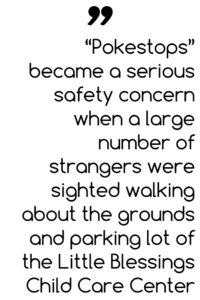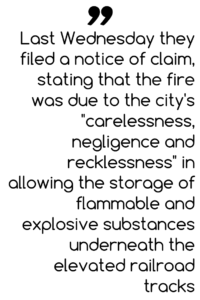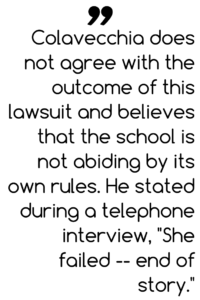Employees at the University of Washington’s Birth Defects Research Center filed a federal class-action lawsuit to prevent release of their names. The employees fear harassment and violence from anti-abortion activists because the Center uses fetal tissue in its research.
The Center’s workers seek an injunction to prevent the sharing of their names with an anti-abortion group, Center for Medical Progress, that filed a public disclosure request. The PDR also covers home addresses and home phone numbers of the employees. According to the lawsuit, the plaintiffs would willingly release laboratory documents and invoices, but with employee names removed.
After the release last summer of edited videos purportedly of Planned Parenthood representatives selling fetal tissue, the Center’s workers concern for their safety increased. Since 1964, the federally funded Center has collected and distributed donated fetal tissues for research conducted by academic and non-profit research facilities. Its tissue collection includes donations from miscarriages, stillbirths and abortions. Some of its tissue donations come from a Washington state Planned Parenthood clinic.
According to the Seattle Times, during 2014, the Center collected 596 fetal samples from two local hospitals and seven clinics. These were donations by consent of the women who had carried the fetuses. Of the 3,000 abortions performed at the Washington state Planned Parenthood clinic that donates to the Center, 20 women donated tissue. The Center does not purchase or sell tissue. In 2014, it distributed 1,109 fetal tissues to more than 60 researchers. Its funding, $700,000 per year, comes from the National Institutes of Health.
The plaintiffs number about 150, including employees of the Center, and its affiliates, Evergreen Hospital Medical Center, Planned Parenthood of Greater Washington and Idaho, the Planned Parenthood Federation of America, and the Cedar River Clinics. The lawsuit cites prior violent actions by abortion activists as reason to withhold the employees’ personally identifiable information. It specifically cites the November 2015 Colorado Springs shooting at a Planned Parenthood office that resulted in three deaths and wounded nine as an example.
The lawsuit names as defendants the University of Washington, and David Daleiden and Zachary Freeman of the Family Policy Institute of Washington. U.S. District Judge James Robart serves as presiding judge, but has not yet scheduled a hearing.




 Designated locations within the game called “Pokestops,” require that players visit each of one the sites to receive rewards, and it appears that even more sensitive locations, such as the U.S. Holocaust Memorial Museum haven’t been spared the intrusion. Holocaust Memorial spokesman Andrew
Designated locations within the game called “Pokestops,” require that players visit each of one the sites to receive rewards, and it appears that even more sensitive locations, such as the U.S. Holocaust Memorial Museum haven’t been spared the intrusion. Holocaust Memorial spokesman Andrew 
 the immigrants did not receive proper notification regarding why the
the immigrants did not receive proper notification regarding why the 

 While no one was injured, the fire left between 30,000-40,000 commuters stranded in Grand Central on that Tuesday evening, as the MTA worked through the night to try and make enough repairs to allow for limited service for the morning commute on the following Wednesday. In the end, serious structural damage led to major delays and disruptions for a few days for the tens of thousands of people who use those lines during each weekday commute. Now, the MTA has warned that they will file a lawsuit against the city of New York.
While no one was injured, the fire left between 30,000-40,000 commuters stranded in Grand Central on that Tuesday evening, as the MTA worked through the night to try and make enough repairs to allow for limited service for the morning commute on the following Wednesday. In the end, serious structural damage led to major delays and disruptions for a few days for the tens of thousands of people who use those lines during each weekday commute. Now, the MTA has warned that they will file a lawsuit against the city of New York.
 One of the defendants, Franco Colavecchia, is a now-retired set design teacher who gave Dickinson an incomplete grade in the spring of 2009. The registrar’s office changed his grade to an F in 2010 because she had not completed the requirements for that course within the academic year. The university has agreed now not to calculate this grade as a part of her GPA. Colavecchia does not agree with the outcome of this lawsuit and believes that the school is not abiding by its own rules. He stated during a telephone interview, “She failed — end of story.”
One of the defendants, Franco Colavecchia, is a now-retired set design teacher who gave Dickinson an incomplete grade in the spring of 2009. The registrar’s office changed his grade to an F in 2010 because she had not completed the requirements for that course within the academic year. The university has agreed now not to calculate this grade as a part of her GPA. Colavecchia does not agree with the outcome of this lawsuit and believes that the school is not abiding by its own rules. He stated during a telephone interview, “She failed — end of story.”


 In the lawsuit, Reich claims that in November of 2014, FedEx driver Crum began tailgating him on Interstate 5 in Southern California. Crum continued to tailgate for several miles before passing Reich at speeds in excess of 55 mph. California has a 55 mph speed cap for semis. While passing him, Crum obscenely gestured at Reich. After passing Reich, Crum abruptly swerved into Reich’s lane and slowed down to 45 mph, causing Reich to brake. Both drivers then pulled over.
In the lawsuit, Reich claims that in November of 2014, FedEx driver Crum began tailgating him on Interstate 5 in Southern California. Crum continued to tailgate for several miles before passing Reich at speeds in excess of 55 mph. California has a 55 mph speed cap for semis. While passing him, Crum obscenely gestured at Reich. After passing Reich, Crum abruptly swerved into Reich’s lane and slowed down to 45 mph, causing Reich to brake. Both drivers then pulled over.